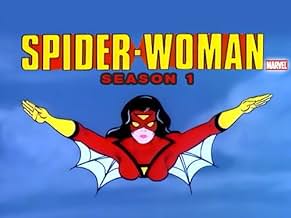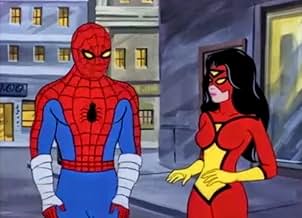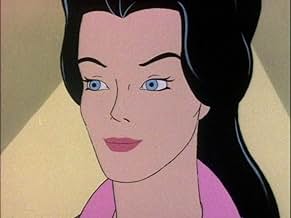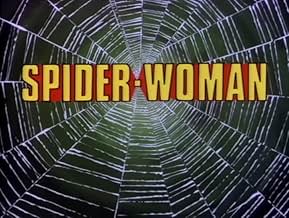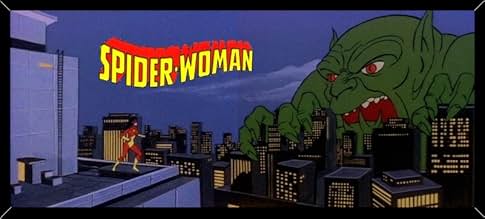Jessica Drew obtuvo poderes al sobrevivir an una picadura de araña cuando era joven gracias a su suero. Cuando surgen problemas, ahora utiliza su identidad oculta: Spider-Woman.Jessica Drew obtuvo poderes al sobrevivir an una picadura de araña cuando era joven gracias a su suero. Cuando surgen problemas, ahora utiliza su identidad oculta: Spider-Woman.Jessica Drew obtuvo poderes al sobrevivir an una picadura de araña cuando era joven gracias a su suero. Cuando surgen problemas, ahora utiliza su identidad oculta: Spider-Woman.
Opiniones destacadas
My Grade: F
In the 1970s, Marvel Comics created a handful of female versions of some of Marvel's popular male characters (allegedly, just so no one else could lay claim to the names): Spider-Woman, the She-Hulk, and Ms. Marvel. Of those three, Spider-Woman quickly became a prominent marketing co-mascot (along with Spider-Man, the Hulk, and Captain America), appearing on various Marvel-branded licensed merchandise, and serving as their de facto representative for lady superheroes (rival DC Comics owned longtime icon Wonder Woman).
Marvel's first animation production house (in cooperation with the DePatie/Freling, firm, who pioneered the "Pink Panther" toons) developed this show.
The show alters the backstory for Jessica Drew, aka Spider-Woman. The comics had an arguably complicated origin story, which posited her as being born in the 1920's, struck by radiation poisoning, then placed in suspended animation where she slowly grew to adulthood over several decades (while periodically being injected with life-preserving drugs based on spider-proteins)..
The producers wisely jettisoned this origin, and simply state that a pre-teen Jessica was bitten by a spider when fooling around in her father's research laboratory. A hasty antidote is created, based on the spider's venom, which ends up giving Jessica her trademark powers. As an adult, Spider-Woman can crawl on walls, has super-strength, can mentally communicate with spiders, has a spider-sense that borders on true clairvoyance, can cast webbing from her fingertips, and can glide on air currents with her web-wings (the webcasting, spider-sense and spider-telepathy were not from the comics). Curiously, she transforms into her Spider-Woman costume simply by spinning around in place (and weaving a thin web around herself)-- this was seemingly taken directly from the "Wonder Woman" TV show.
The adult Jessica is now a magazine publisher (Justice Magazine), though apparently she often serves as her own reporter, along with pilot/photographer Jeff (a dead ringer for Peter Parker) by her side, as well as her nephew Billy (Billy's parents, including a presumed Drew sibling, are never seen).
The Kingpin and Dormammu are among the Marvel comics villains used here, though the portrayals are not exactly as the comics origins.
Spider-Man is a guest in two episodes-- though in both, Spider-Woman is clearly the main star, and viewers never see Spider-Man out of costume.
The animation was about par for the time (late 70's). Not pioneering, but not "Rocky & Bullwinkle" cheap, either.
Joan Van Ark ("Falcon Crest") did the voice of Jessica/Spider-Woman.
It would be great to have this series on DVD. Disney acquired Marvel Comics in 2009, including the back catalog video rights to all animated TV shows based their characters. Spider-Woman has been released on DVD in Europe, but not the USA yet.
¿Sabías que…?
- TriviaThis animated series takes place in the Earth-700459 version of the Marvel Comics multiverse.
- Citas
Announcer: And this is Jessica Drew, who was a child while visiting her father's laboratory, was bitten by a poisonous spider. Forced to try an untested spider serum, Dr. Drew not only saved his daughter's life, but unknowingly gave her incredible spider-like powers. Dedicated to fighting evil, while weaving her web of justice, it's Spider-Woman!
- ConexionesEdited into Marvel Action Universe (1988)
Selecciones populares
- How many seasons does Spider-Woman have?Con tecnología de Alexa
Detalles
- Tiempo de ejecución21 minutos
- Color
Contribuir a esta página


